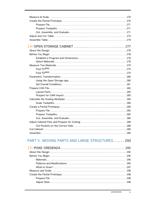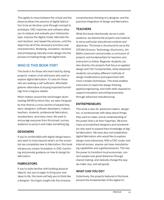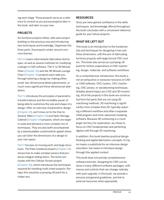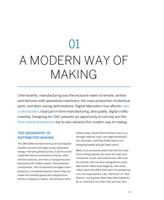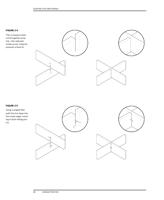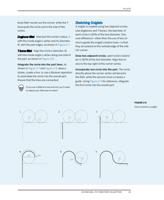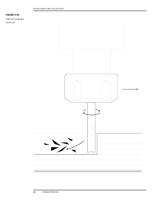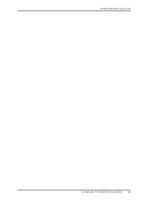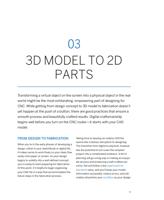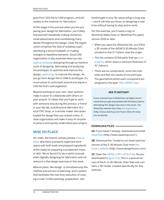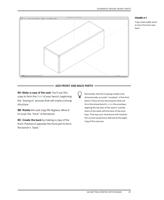
EIGHT BASIC CNC JOINT CONDITIONS
FIGURE 2-15
ShopBot CNC router
with machined and par-
tially assembled parts
these choices, it’s important to consider the
relationship between the parts and the whole of
a design, and the role of joinery to clarify or
participate in that relationship.
FLAT PARTS FROM SHEET MATERIALS
The projects in this book use profiles and pock-
ets to make flat parts from sheet materials, as
shown in Figure 2-15. Just as it sounds, sheet
materials are manufactured materials that
have been formed into flat sheets. Also known
as sheet goods, stock, or stock material, they
come in a wide range of materials and are pro-
duced to nominal (or standard) dimensions.
Most projects in this book use ¾″ (19mm) low-
cost plywood sheets that you can easily find at
home improvement stores and lumber yards.
For simplicity and clarity, a ShopBot PRS
Alpha, capable of cutting standard 4′ × 8′
sheets of plywood, serves, as this book’s
“example machine.”
Traditional woodworking joinery techniques
evolved around a craftsperson working with
hand tools in solid hardwoods with access to all
sides of the workpiece. CNC joinery made with
flat, plywood parts that must account for the
three-axis machine, which can only cut from
one side at a time.
In this section, we focus on joinery that creates
large furniture objects from flat parts. Narrow-
ing our scope allows us to categorize the major-
ity of joints out there into eight basic joint
conditions. Understanding that there are basic,
elemental conditions for connecting parts to a
whole will lead to better design—and provide
insight into why choosing one joint detail over
another is suited to a particular application in
your own design.
The projects in this book utilize most of these
eight basic conditions in order to get the most
out of flat parts cut from sheet materials. They
are summarized here to provide an overview of
basic CNC joinery and construction, so that
you can ultimately incorporate and evolve them
in your own designs.
48
DESIGN FOR CNC













